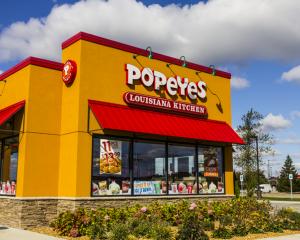
They say they had not been aware of the new timeframe for completion of the end of 2022.
"It is quite disappointing. It's been 10 years, if anyone had said we'd have to wait this long in the beginning, we would have said we couldn't do it," Swimming Canterbury West Coast MSF sub-committee member Wayne Rollinson said.
The organisation's numbers declined dramatically directly following the earthquake, the biggest issue has been the lack of a 50m pool.
Rollinson said their big competitions have had to be held in Dunedin and Wellington.
"Families have incurred significant extra cost for traveling."
The $300 million facility (MSF), expected to be the biggest aquatic and indoor recreation and leisure venue in the country, was announced as part of the Central City Recovery Plan and was originally due to open in early 2016.
In 2017, then Christchurch Regeneration Minister Megan Woods scrapped the initial design and build contract with Leighs Cockram Joint Venture and later awarded the contract to Australian company CPB contractors.
The build is being managed by Crown rebuild company Ōtākaro Limited.
But It is not all bleak for swimming in the region - Rollinson said membership has bounced back to pre-quake numbers now.
It has been even more difficult for the Canterbury Diving Club, which is now essentially non-existent.
"We've lost 11 years' worth of diving really. Given the demise of the original QEII pool, we've had no facilities to practice our sport, so the club has essentially folded.
"Three of us have kept the committee seats warm up until the new facility is open," president Ian Phillips said.
He said before the earthquake, the team boasted at least 100 members and they are aiming for similar numbers to Auckland and Wellington, which have about 200.
"It's something we are excited about for the future, to start building diving again but it is a shame that we've been lost for so long.
"Other clubs have managed to stay functional but I think due to the specialist nature of the facilities we need, obviously that's affected us more."
The club has started meeting again and hopes to set up a Facebook page soon to gauge expressions of interest in the sport.
"We have to reform and get a decent-sized membership going before the Metro Sports Facility opens."
They have been meeting with the Christchurch City Council and Sports Canterbury regularly and Phillips said those organisations have been very supportive.
"We've been really pleased. Everyone who is involved in the project is so keen for it to be as good as it can be."
The club is currently working to find some space for dry-land training so members are ready to move into the facility when it opens.
"We won't be having an elite level club too soon cause we'll all be starting at a novice skill level. We just want to get as many youngsters in, adults as well, and get them to have a feel for the sport."
Phillips said they are very excited to be moving into the facility, which is expected to be a major drawcard for the sport across the country.
An Ōtākaro Limited spokesperson said they are about 40 per cent of the way through the construction of the Metro Sports Facility. There are currently around 150 people working on-site.
"The varying border and distancing restrictions in place here and around the globe over the past year have an impact on productivity. As an example, the stainless steel pools are manufactured in northern Italy, so getting both the product and expert staff required to oversee the installation here was delayed by the pandemic.
"Planning for and implementing a change to such a fundamental part of the construction sequence naturally added time to the construction process."
The facility will include:
• A 50m, 10-lane competition swimming pool.
• A separate diving pool
• A large aquatic leisure area
• Five hydroslides
• Fitness spaces and nine indoor courts for sports with adjustable seating which can host 2500 people.













